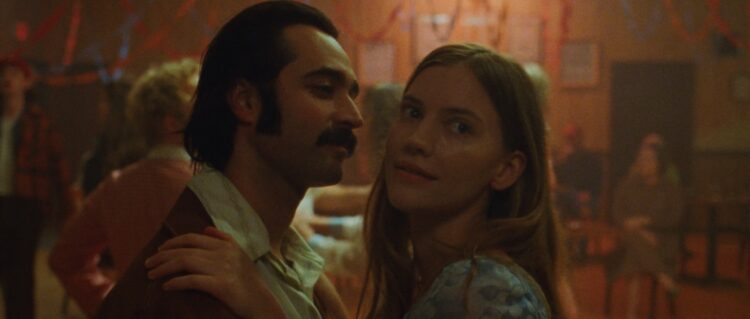Share with us the story of Motherland.
Motherland is based on the story of my parents, namely my father Babak who came to the US in the late 70s. It’s a story about how Babak has to navigate being an Iranian in the US during the 1979 Iran Hostage Crisis. The implications of his identity call into question his relationship with his American fiancé’s parents, as well as Babak’s future in America.
Your film is partially inspired by your father’s experiences. Tell us more about his background.
My father came from Tehran to the US around 1978, just as the Iranian Revolution was gaining steam. He came to pursue the American dream in Massachusetts, however due to a number of factors – including the severe racism he faced during the hostage crisis – he left the US and went to Canada. In Canada he met my mother, but her parents rejected her for marrying an Iranian. It wasn’t until much later that they eventually welcomed him into their family. In 2013, he passed away, so he never got to see this film. I see the film as a bit of an homage to him.
What kind of research did you do in the development of this film?
I did a lot of research for the film. First, I did personal research – interviewing my mom, my grandmother (my father’s mother), and his brothers to get a better sense of my father’s motivations for being in the US at the time. I also wanted to understand how the Hostage Crisis affected my whole family. After that, I did a deep dive into American news archives like the New York Times, ABC, Washington Post etc. I was able to get a sense of how Americans felt towards Iranians at the time, and how the media was shaping their views of Persian people.
The short does a brilliant job in capturing a specific period in American history. How did you go about recreating that look?
It is so important to me that the audience feels like they’re watching a film from the 1970s, not an imitation of one. To achieve that the entire creative team needed to be on the same page of doing everything in our power (and budget) to achieve authenticity. We shot on 16mm film which I think transports you back to a different time. Our costume designer Mara Zigler has an amazing eye and only rented costumes from the 70s – nothing was modern. Also just being smart with the locations – shooting specific angles that cut out modernity.
Bahtash Fazlali gives a phenomenal performance as Babak, the lead character. How did you come across him?
I saw Behtash in my best friend’s short SAHAR (TIFF 2014). I thought he was super talented. I was in Vancouver, BC shooting a TV show and met with Behtash. We went for a hike and I learned about his background. He had so much in common with my father, it just confirmed for me that he was the one.
What scene was the biggest challenge to shoot?
The most challenging scene was the American Thanksgiving celebration/dance scene. We needed to hire a bunch of special skills extras who knew how to dance. We also needed a very good choreographer who understood square dancing. And then to coordinate all those moving parts on the day, plus the camera and lead actors was a challenge – but also very fun.
There has been some criticism regarding the negative depiction of Iranians in TV and film in these past couple of decades. What is your opinion on the subject?
Since the hostage crisis to this day, Iranians and Middle Eastern people have almost always been portrayed negatively. Mostly as terrorists or liars, “savages” or violent. Even the films about the diaspora have historically been told (poorly) by white Americans. It’s very odd. I think now is the time for us to reclaim our narratives. There is so much beauty and humanity in our people and culture and it’s time the world sees more of that.
What’s next for you?
Promoting Motherland worldwide and writing my next feature!
